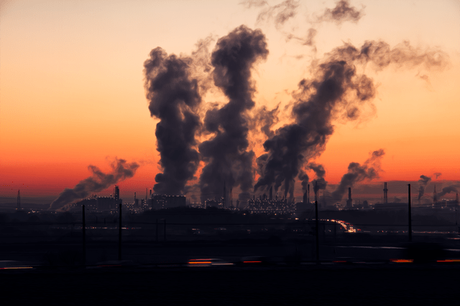Air Pollution in National Parks Nearly the Same as in 20 Major Cities in US
A recent study reveals how important clean air regulation is to prevent air pollution from national parks. Also, another study that was released in the Science Advances on Wednesday 18th July 2018 stated that from 1900 to 2014 the level of Ozone found in 33 of the biggest and the most visited parks are indistinguishable from the level of Ozone found in 20 largest cities in the United States.
Even though the air quality of urban areas where improving as a result of the 1990 version of Clean Air Act, the study revealed that the Ozone concentrations were in high amount until the intervention of the U.S Environmental Protection Agency (EPA) with the 1999 Region Haze Rule, which helped to call on the state to decrease the release of greenhouse gases to improve visibility in these national parks.

According to the study, more than 300 million visitors travel to these national parks annually to see the beautiful places in it, but high ozone concentrations in these parks can affect not visitors.
However, David Keisser, assistant professor of economics at Iowa State stated this: “The US has spent billions of dollars over the last three decades to improve air quality. Given the popularity of national parks, as well as the fact that people go to parks to be outside, we believe it was worth better understanding air quality trends in these areas and whether people, through their actions, respond to changes in air quality in parks.”
However, the researchers of the study discovered that the number of days the concentrations of Ozone levels that was deemed unsafe by the EPA decreased more substantially in urban areas than in parks, suggesting the need to strengthen the haze rule.
“Even though the national parks are supposed to be icons of a pristine landscape, quite a lot of people are being exposed to ozone levels that could be detrimental to their health,” the study co-author and Cornell University assistant economics professor Ivan Rudik reported to The Associated Press.
It is important to know that the study was done by researchers at Iowa State and Cornell Universities and they stated that lots of individuals across the globe are taking health concerns very seriously and they these people stay away during days when the air quality is low; as a result the percentage of visitations to these parks fell by 2% when the air quality rose in a considerable amount and by as much as 8% in month with three or more Ozone days.
Although the research couldn’t lay hold of the why the number of visitation decreased at those days, but according to Rudik, visitors choose to stay away when they get notified by air quality reports issued by government agencies and parks. Other researches also discover that people are likely to stay away from locations covered by pollution alerts.
According to critics stated according to the Sierra Club, the results bring a new argument against the plans by Trump’s EPA to reverse changes made by the haze rule by the Obama administration to strengthen it by needing scrubbers and other technological methodologies to decrease the level of pollution from industrial sources. The original version of the rule by Obama’s administration would only return normal visibility to 30 parks by 2064.
“Some of the arguments that people are making against the Regional Haze Rule are that the benefits are basically zero, that these visibility rules don’t matter that much or maybe the health improvements are overstated. But if you look at what people actually do, they clearly do care,” according to Rudik to the Sierra Club.
However, most national parks still receive lots of visitors monthly. Overall, national parks have recorded over high numbers of visitors lately and 35% of park visits take place when they are extremely high ozone levels. The health of these visitors is still a big issue and a reason why the rule needs to be strengthened effectively.
“The dollar value of these health benefits could be very large, especially if you aggregate them over these millions of visits over the years,” Rudik also told The Sierra Club.
It is important to know that Sequoia National Park is one of the worst national parks due to the levels of pollution from sources like farms, highways, and urban pollution from as far away as San Francisco, according to a report from CNN.
During every year, expect two since 1996, Sequoia National Park had more days on which ozone levels breached the EPA’s safe limit than did Los Angeles, the U.S. City with the worst ozone pollution, the researchers discovered.
Also, the Acadia National Park has some of the highest air pollutions in the Northeast, so also is the Joshua Tree National Park.
Overall, unsafe ozone days have fallen from 53 to 18 annually in major cities and 27 to 16 days per year in National Parks.

